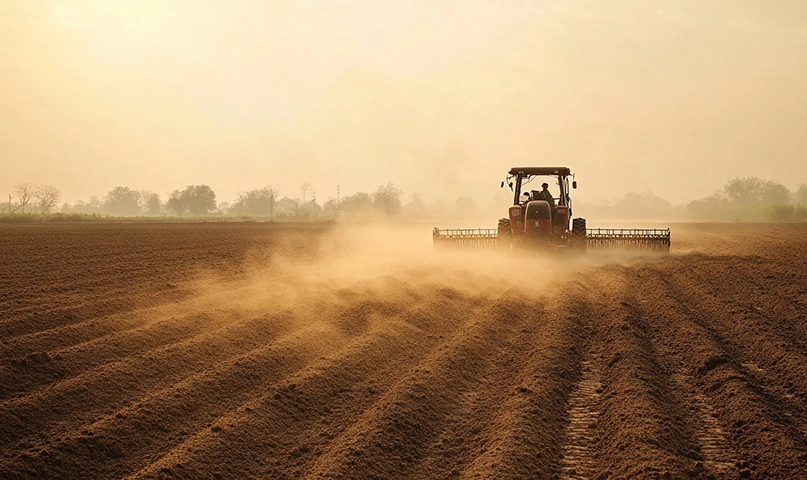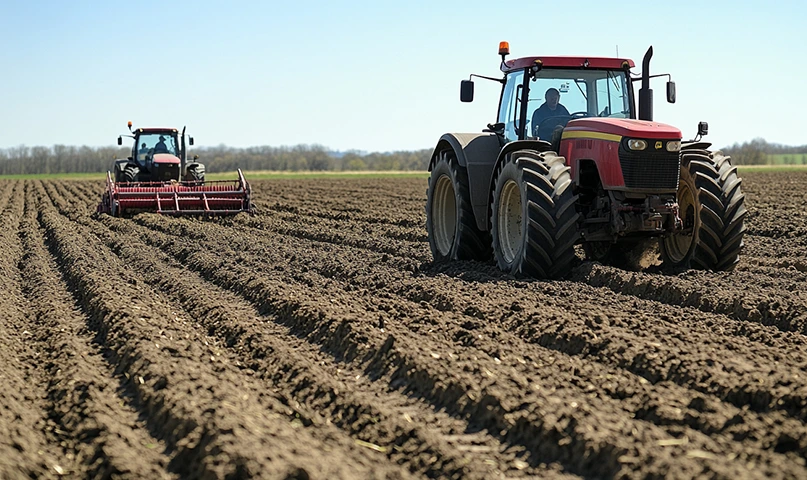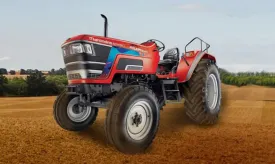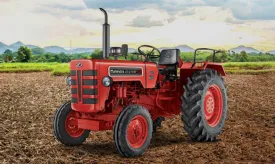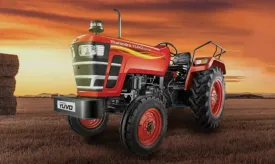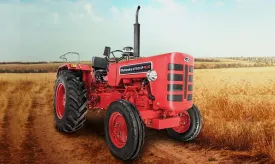Tips for preparing your farming land with Mahindra rotavator

Preparing the land is one of the most critical steps in farming, as it sets the foundation for a successful crop. One of the most effective tractor implements for this task is the rotavator, an essential piece of equipment that helps till the soil, break up clods, and prepare a smooth, aerated seedbed. The Mahindra rotavator, known for its durability and performance, is a trusted tool for farmers across the globe.
In this blog, we'll guide you through some essential tips for preparing your farming land with a Mahindra rotavator, helping you achieve the best results for your crops.
1 Choose the right model for your farm

Before you begin, it's essential to choose the correct Mahindra rotavator model for your farm. The choice of a rotavator depends on several factors like the size of your field, soil type, and the type of crops you're growing.
- Field size: Mahindra offers different rotavator models tailored for both small and large fields. For smaller plots, a compact, lightweight rotavator may be more suitable, while larger, heavy-duty models are ideal for extensive farm operations.
- Soil type: If your soil is particularly tough or clayey, consider a model with stronger blades designed to handle harder ground. For loamy or sandy soil, a standard model will be sufficient.
- Crops: Some models are specifically designed for certain crops, so make sure you choose one that best fits your specific farming needs.
2. Check the rotavator and tractor compatibility

The Mahindra rotavator works best when properly attached to the tractor, ensuring smooth operation and optimal performance. Ensure that the rotavator is compatible with your tractor model.
- Tractor power: Ensure your tractor has enough horsepower to handle the rotavator's load. If the tractor's power is too low, it might strain the engine or result in suboptimal performance.
- Proper attachment: Check that the rotavator is securely attached to the tractor's three-point linkage. Improper attachment can lead to uneven soil cultivation and increase wear and tear on the equipment.
3. Adjust the depth of the rotavator
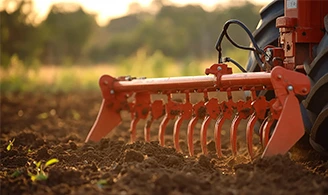
One of the key features of a Mahindra rotavator is its adjustable depth settings. Adjusting the depth properly ensures that the soil is tilled to the correct depth, allowing for optimal seedbed preparation.
- Shallow tilling: For crops that require light tilling, such as vegetables, set the rotavator to a shallow depth of 2-3 inches.
- Deep tilling: For crops like wheat or corn that need deep soil preparation, set the rotavator to a deeper setting of 5-7 inches to allow for better root growth and soil aeration.
- Consistency: Ensure the depth is consistent across the entire field to promote uniform growth of your crops.
4. Ensure proper blade alignment

The effectiveness of a rotavator largely depends on the condition and alignment of its blades. Mahindra rotavators are equipped with durable blades that can tackle various soil conditions, but they require regular inspection and maintenance to stay in top shape.
- Check blade sharpness: Worn-out or blunt blades will not be as effective in breaking up soil and can result in uneven tilling. Make sure the blades are sharp and in good condition before starting work.
- Blade spacing: Ensure that the blades are spaced correctly and aligned to work efficiently. Misaligned blades can lead to uneven soil mixing, affecting the quality of the seedbed.
5. Monitor the tractor's speed and operating RPM
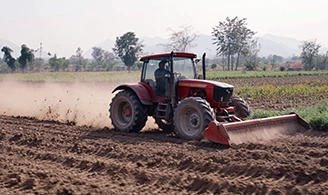
The speed at which you operate your tractor and rotavator is crucial to achieving the desired results. Operating at the right speed ensures that the soil is adequately broken and prepared.
- Maintain the correct speed: Typically, a Mahindra rotavator works best at a speed of 2-4 km/h. Going too fast can cause the soil to be left in large clods, while moving too slow might lead to over-tilling or soil compaction.
- Monitor RPM: Keep an eye on your tractor's engine RPM (revolutions per minute). Operating at the right RPM will prevent overloading the engine and ensure efficient tilling.
6. Perform multiple passes for tougher soil

If you are working with compacted or clay-heavy soil, a single pass with the rotavator may not be enough to achieve optimal soil preparation. In such cases, it's advisable to perform multiple passes at different depths.
- First pass: Start with a shallow pass to loosen up the soil.
- Second pass: Lower the depth and make a second pass to break up larger clods and further refine the soil.
- Final pass: Perform a final shallow pass to smooth the surface and prepare a fine seedbed.
By making multiple passes, you'll improve soil structure and create a more uniform planting environment.
7. Ensure proper field drainage
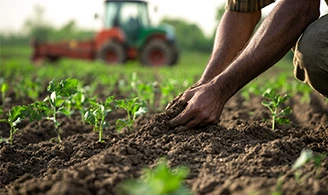
Before using the rotavator, ensure that your field has good drainage. If the soil is too wet or saturated, tilling can cause the soil to become compacted or sticky, leading to uneven results.
- Ideal soil moisture: The ideal moisture level for tilling is when the soil is slightly moist but not overly wet. If the soil is too wet, allow it to dry out a little before using the rotavator.
- Avoid working in waterlogged fields: Working in waterlogged fields can cause the rotavator to clog and might lead to a poor seedbed structure.
8. Maintain a steady pace

Maintaining a steady and consistent pace while operating the Mahindra rotavator is essential to achieving uniform soil preparation. Sudden acceleration or deceleration can result in uneven soil texture, which affects seed germination.
- Smooth operation: Avoid jerky movements or sudden changes in speed. Keep a steady hand on the tractor's throttle to maintain consistent tilling.
- Straight lines: Drive in straight lines to ensure uniform coverage across the field. This makes the subsequent planting process easier and ensures better crop development.
9. Check and clean the equipment after each use
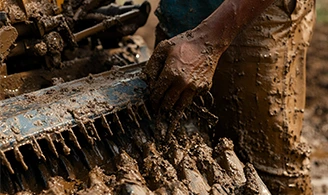
After you've finished preparing your land, take time to properly clean and maintain your Mahindra rotavator to ensure it remains in good condition for future use.
- Clean debris: Remove soil, weeds, and other debris from the blades and the rotor to prevent buildup, which can affect performance.
- Check for damage: Inspect the rotavator for any damaged parts or wear and tear. Regular maintenance will keep your equipment running smoothly and increase its lifespan.
- Lubricate moving parts: Apply lubrication to the rotating parts to reduce friction and prevent rust and corrosion.
10. Use the right attachments for specific needs

Mahindra rotavators offer a range of attachments that can enhance their performance. Depending on your farming needs, you might want to attach additional equipment for specific tasks.
- Heavy duty blades: For rocky or compacted soils, opt for heavy-duty blades that can handle tough conditions.
- Land levelers: If your field has uneven surfaces, a land leveler attachment can help smooth out the ground after tilling, creating an even seedbed for planting.
Conclusion
Preparing your farming land with a Mahindra rotavator is a straightforward process when you follow the right practices. From selecting the right model for your field size and soil type to ensuring proper maintenance and operation, these simple tips will help you get the best results. With consistent care and attention, your Mahindra rotavator will continue to perform at its peak, helping you prepare your land for successful crop production year after year. Proper soil preparation leads to better seed germination, healthier crops, and ultimately, a more productive and profitable farming operation.









